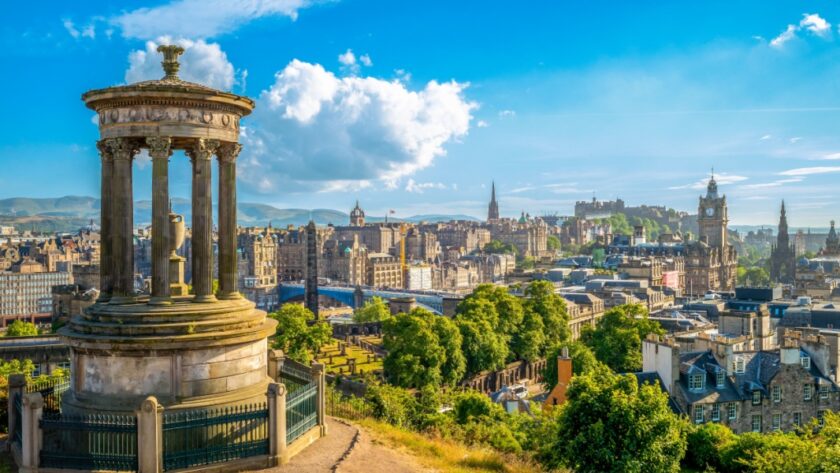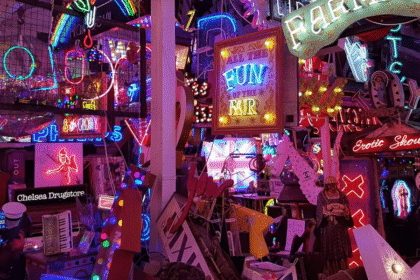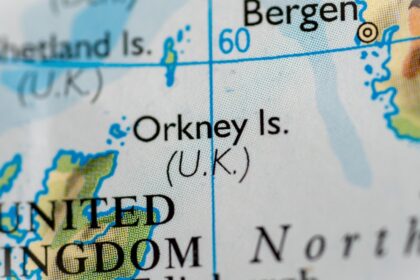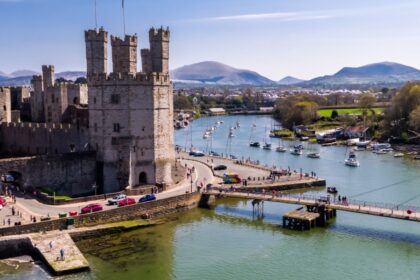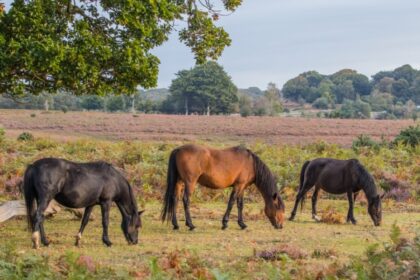Edinburgh is not a city that eases you in. It grabs you by the collar the moment you step off the train, marches you out onto Princes Street and slaps you with a view so theatrical it ought to come with its own curtain call. There’s the castle, hulking like a stone crown on its crag. There’s Arthur’s Seat, brooding behind the rooftops. And between them runs the Royal Mile, spilling history with every cobblestone.
This is a city that knows how to make an entrance. But don’t mistake drama for pretension. Edinburgh’s grandeur is of the lived-in sort. It is, after all, a place where medieval wynds run beneath Enlightenment terraces. Where philosophers once debated by candlelight and now people eat chips out of paper under neo-Gothic spires. If ever a city earned the right to be both stately and a bit cheeky, it’s this one.
The city on the rock
Edinburgh’s story begins with a rock. Not just any rock, but a jagged plug of volcanic basalt that rises from the surrounding land like something left behind after a particularly bad-tempered geological tantrum. It was here that Iron Age settlers first built a fort, which eventually became a castle, and then a royal residence, and then a military stronghold, and then, almost inevitably, a tourist attraction with a gift shop.
By the 12th century, Edinburgh was already a royal burgh, and by the time of King David I, it had begun to take shape as a town of some importance. The Old Town grew along the spine of the volcanic ridge, its narrow streets and tight alleys squeezed between the castle at one end and Holyrood Abbey at the other. This long, sloping thoroughfare is what we now call the Royal Mile, although no one in medieval Edinburgh would have used the term. They were too busy avoiding chamber pots being emptied from upstairs windows.
Ideas, ink and Enlightenment
Despite its ancient bones, Edinburgh’s golden age arrived not with kings or battles, but with books. In the 18th century, the city became the beating heart of the Scottish Enlightenment. David Hume, Adam Smith, and a host of other clever men (and a few brilliant women, often excluded from the footnotes) turned the city into a laboratory of reason. Coffee houses buzzed with argument. Libraries groaned under the weight of fresh thought. There were footnotes everywhere.
This intellectual fervour earned Edinburgh the nickname Athens of the North, though one suspects it might have come about simply because someone once saw a column and got a bit carried away. Still, the name stuck, and it does reflect the seriousness with which the city took its role as a crucible of ideas.
In this period, the New Town was built. And what a town it was. Wide streets, elegant squares, and rows of Georgian terraces laid out with rationality in mind. It was like someone had taken a T-square to a medieval riot. The contrast between Old and New still defines Edinburgh’s character today – gritty and grand, dark alley and drawing room.
A city of layers
If you want to understand Edinburgh, you have to look down. Beneath your feet are layers of life piled up like forgotten laundry. There are entire streets that were buried and built over. Vaults where merchants once stored their wares and where, later, the city’s less salubrious residents found darker uses for them. It’s a place where history is not so much preserved as folded in, like jam into a Victoria sponge.
This sense of vertical life, of up and down as much as forward and back, is what makes Edinburgh so thrilling. You don’t walk along the city, you climb it. Streets snake upwards, staircases tumble down. Every corner suggests something hidden, and frequently delivers.
From cobbles to capital of culture
Fast forward a few centuries, and Edinburgh has become something quite remarkable. It’s a capital city, yes, but not the brash, muscular kind. It’s a capital with a fondness for poetry, hill walks and quiet dignity. In the modern age, it has found itself at the crossroads of heritage and invention.
There is the Edinburgh Festival, of course, or rather, festivals. In August, the city expands like an overstretched accordion. Theatre troupes, comedians, musicians and half the population of Australia pour into every available room. One minute you’re watching Shakespeare in a former church crypt, the next you’re listening to jazz in a laundrette. It is exhausting, glorious chaos, and the only thing more astonishing than the number of shows is the number of flyers you’ll be handed in a single afternoon.
But the cultural calendar doesn’t stop when the last juggler leaves. The Book Festival, the Science Festival, the Film Festival – all make a strong case that Edinburgh has a calendar more crowded than most kitchen fridges. And then there’s Hogmanay. Not so much a New Year’s celebration as a full-throttle Viking saga with fireworks.
A city that never stopped reinventing
Part of Edinburgh’s charm is its refusal to sit still. It may carry centuries of history in its walls, but it never quite lets itself become a museum piece. The University, founded in the 16th century, is still fizzing with new ideas. The city’s startups hum away in converted warehouses. Writers still write, thinkers still think, and the odd inventor still blows something up in the name of progress.
The old port of Leith, once a place of shipyards and sailors’ pubs, is now all sea breeze, sourdough and small-batch everything. You can still hear seagulls, but they’re competing with the clink of wine glasses. Over in the city centre, trams glide past buildings that once saw gaslight and horse-drawn carriages, now filled with bookshops, bakeries and people arguing over theatre flyers.
This is a city that updates itself without deleting anything. You can walk past a medieval church, into a Georgian square, and end up inside a gallery that looks like it fell out of the future. Somehow, it all holds together. It’s not trying to be modern. It just is. Without making a song and dance about it.
The capital with a castle for a hat
It’s tempting to see Edinburgh as a city divided into parts – Old and New, royal and rebellious, high-minded and earthy. But the truth is, it’s all one glorious muddle. That’s what makes it so irresistible. You can follow the footsteps of Mary Queen of Scots in the morning and sip cold-brew coffee in a Scandinavian cafe by lunchtime. You can hear bagpipes echo off the castle walls and find experimental art installations under South Bridge. Sometimes in the same afternoon.
And always, above it all, the castle looms. It’s hard to overstate how much the cityscape is dominated by it. There it sits, like a granite hat, both guardian and showpiece. You see it when you’re shopping, when you’re hiking, when you’re simply trying to cross the road. It’s like a benevolent uncle with good posture – always present, never pushy, reassuringly solid.
Why people keep coming back
Edinburgh is not a one-hit wonder. Visitors return year after year, drawn by something they can’t quite name. It’s not just the architecture, though it’s stunning. Not just the festivals, though they are second to none. It’s something to do with atmosphere. The way the light falls on the stone. The sudden silence you find in tucked-away quiet corners. The fact that even on a busy street, you feel like the city is having a quiet word with you.
It’s also a city that rewards attention. The more you look, the more it gives. A weathered carving on a church door. A hidden plaque marking the site of a long-vanished theatre. A pub where Conan Doyle once watched the world and quietly took notes.
Edinburgh never tries too hard
Perhaps that’s the key to Edinburgh’s appeal. It doesn’t parade itself. It doesn’t shout. It simply stands there, solid and slightly aloof, and lets you discover its charms in your own time. It’s a city that knows its worth but doesn’t make a fuss. It assumes you’ll notice eventually. And you will.
Because once you’ve walked its hills, breathed its chilly air, laughed in its cellars and watched the sun set over its chimneys, you’ll understand. Edinburgh is not just a city. It’s an experience, a puzzle box, a poem written in stone. And it’s waiting to be read.

